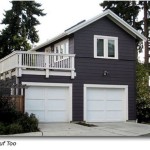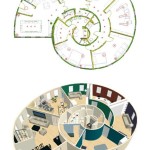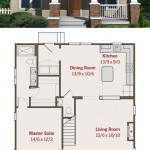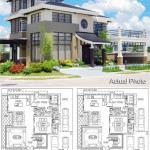3 Bedroom House Plans: Design Options and Estimated Building Costs
Designing and building a three-bedroom house is a common goal for many homeowners. This size typically offers a balance between affordability and sufficient space for families or those desiring extra rooms for guests, home offices, or hobbies. The process begins with selecting a suitable house plan, followed by understanding the associated construction costs. Both elements are critical for a successful and financially sound building project.
The selection of a three-bedroom house plan involves considering various factors, including lifestyle, budget, lot size, and aesthetic preferences. Numerous architectural styles and layouts are available, each with unique characteristics that influence cost and functionality. Once a plan is chosen, accurately estimating the building cost is crucial for securing financing, budgeting effectively, and avoiding potential financial pitfalls during the construction phase. This article explores different three-bedroom house plan options and provides guidance on estimating the cost to build, focusing on aspects influencing construction expenses and offering strategies for cost management.
Exploring Different Three-Bedroom House Plan Styles
Three-bedroom house plans are available in a wide array of architectural styles, each offering distinctive aesthetic features and functional layouts. The choice of style significantly impacts the overall cost, construction timeline, and long-term maintenance requirements. Among the popular options are ranch-style homes, two-story houses, and contemporary designs. Examining the characteristics of each style helps homeowners make informed decisions aligning with their preferences and budget.
Ranch-style homes are characterized by their single-story layout, low-pitched roofs, and open floor plans. They offer ease of movement and accessibility, making them suitable for families with young children or individuals with mobility limitations. These homes generally require a larger lot due to their horizontal footprint. Building costs can vary depending on the complexity of the roofline and the materials used. Ranch homes often benefit from simplified framing, which can contribute to relatively lower labor costs.
Two-story houses provide more living space within a smaller footprint, making them ideal for smaller lots. They typically feature bedrooms on the upper level and living areas on the main floor. Two-story construction can be more cost-effective than ranch-style construction in terms of foundation and roofing per square foot, as the vertical expansion maximizes the use of these components. However, they require stairs, which may pose challenges for some individuals. The cost of two-story homes depends largely on the complexity of the floor plan and the interior finishes.
Contemporary house plans emphasize clean lines, open spaces, and natural light. They often incorporate sustainable building materials and energy-efficient technologies. These designs can be highly customized to reflect the homeowner's personal style and preferences. Building a contemporary home may involve higher upfront costs due to the specialized materials and construction techniques often required. However, the long-term benefits of energy efficiency and reduced maintenance can offset these costs over time.
Beyond these primary styles, numerous variations and hybrid designs exist. For example, a split-level house features multiple levels connected by short flights of stairs, offering a unique layout and separation of living spaces. A craftsman-style home incorporates natural materials, exposed beams, and intricate detailing, creating a warm and inviting atmosphere. Ultimately, the choice of architectural style depends on individual preferences, budget constraints, and the characteristics of the building site.
Key Factors Influencing the Cost to Build a 3-Bedroom House
Estimating the cost to build a three-bedroom house accurately requires considering several key factors that significantly influence the overall expenses. These factors can be broadly categorized into several areas, including location, size and layout, materials and finishes, labor costs, and site preparation. Each of these elements contributes to the total construction cost and should be carefully evaluated during the planning phase.
The location of the building site has a considerable impact on construction costs. Areas with higher costs of living generally experience higher labor rates and material prices. Moreover, local building codes and permitting requirements can vary significantly, affecting the time and expense associated with obtaining necessary approvals. Remote locations may also incur additional transportation costs for materials and labor.
The size and layout of the house directly affect the amount of materials and labor required. Larger homes naturally require more materials and take longer to build, resulting in higher costs. Complex floor plans with intricate rooflines and numerous corners also increase construction expenses due to the added complexity of framing and finishing. Optimizing the layout to minimize waste and simplify construction can help control costs.
The selection of materials and finishes plays a crucial role in determining the overall cost. High-end materials, such as hardwood flooring, granite countertops, and custom cabinetry, can significantly increase expenses compared to more affordable options. Similarly, the choice of exterior finishes, such as brick, stone, or siding, impacts the cost. Balancing aesthetic preferences with budgetary constraints is essential when selecting materials and finishes.
Labor costs represent a significant portion of the total construction expenses. These costs vary depending on the location, the type of work involved, and the experience and credentials of the contractors. Obtaining multiple bids from qualified contractors is recommended to ensure competitive pricing and evaluate the quality of work. It is also important to factor in potential cost increases due to labor shortages or unexpected delays.
Site preparation involves preparing the building site for construction. This may include clearing vegetation, grading the land, and installing utilities. The complexity of site preparation depends on the topography of the land, the presence of existing structures, and the soil conditions. Sites with steep slopes or unstable soil may require extensive excavation and foundation work, adding to the overall cost.
Strategies for Managing Construction Costs Effectively
Building a three-bedroom house can be a significant investment, and managing construction costs effectively is crucial for staying within budget and avoiding financial stress. Employing proactive strategies throughout the planning and construction phases can help minimize expenses and ensure a successful project. These strategies include realistic budgeting, value engineering, obtaining multiple bids, and maintaining open communication with the construction team.
Creating a realistic budget is the first step in managing construction costs. This involves estimating all expenses, including materials, labor, permits, and contingency funds for unexpected issues. Researching local construction costs and consulting with experienced builders or cost estimators can provide valuable insights. It is also important to factor in potential cost overruns and allocate a sufficient contingency fund to cover unforeseen expenses.
Value engineering involves analyzing different design and material options to identify cost-effective alternatives without compromising quality or functionality. This may include simplifying the floor plan, choosing more affordable materials, or optimizing the use of space. Consulting with an architect or designer can help identify opportunities for value engineering throughout the project.
Obtaining multiple bids from qualified contractors is essential for ensuring competitive pricing and evaluating the quality of work. Requesting detailed bids that clearly outline the scope of work, materials, and labor costs allows for accurate comparisons. Checking references and reviewing past projects can help assess the contractor's experience and reliability.
Maintaining open communication with the construction team is critical for managing costs and avoiding misunderstandings. Regularly communicating with the contractor, architect, and other stakeholders ensures that everyone is on the same page and that potential issues are addressed promptly. Keeping detailed records of all communications, change orders, and expenses helps track progress and manage the budget effectively.
In addition to these strategies, homeowners can consider other cost-saving measures, such as performing some of the work themselves (if qualified), purchasing materials directly from suppliers, and coordinating deliveries to minimize transportation costs. However, it is important to carefully assess the risks and benefits of each approach and ensure that all work is performed to code and meets quality standards.

Simple Three Bedroom House Plans To Construct On A Low Budget Co Ke

Simple Three Bedroom House Plans To Construct On A Low Budget Co Ke

House Plans Kenya Affordable Bungalow Style Smart
Est House Plans To Build Simple With Style Blog Eplans Com

Building On The Affordable House Plans Of 2024 Houseplans Blog Com

3 Bedroom House Plan A001 Plans Design Kenya

3 Bedroom House Plan Muthurwa Com Bungalow Style Plans Building Affordable

Est House Plans To Build Simple With Style Blog Eplans Com

3 Bedroom House Plans And Cost In Kenya 2024 Urban Rural Rates To Co Ke

Simple Three Bedroom House Plans To Construct On A Low Budget Co Ke
Related Posts








